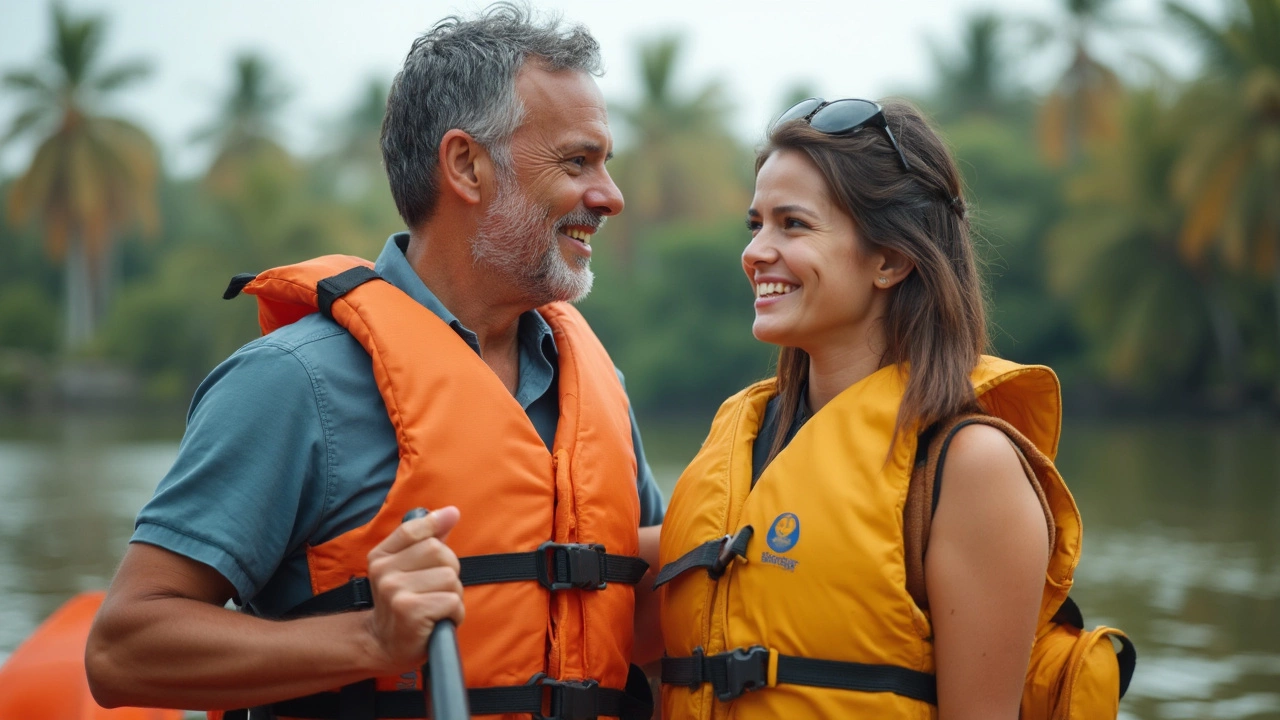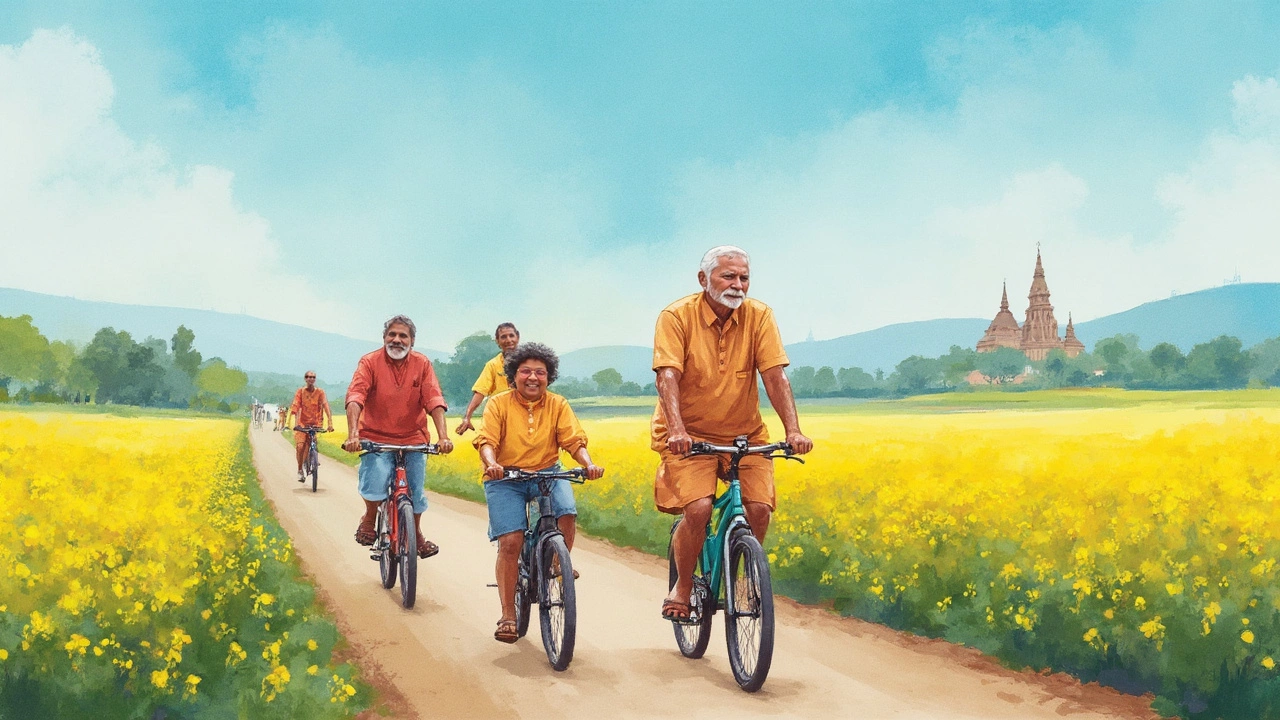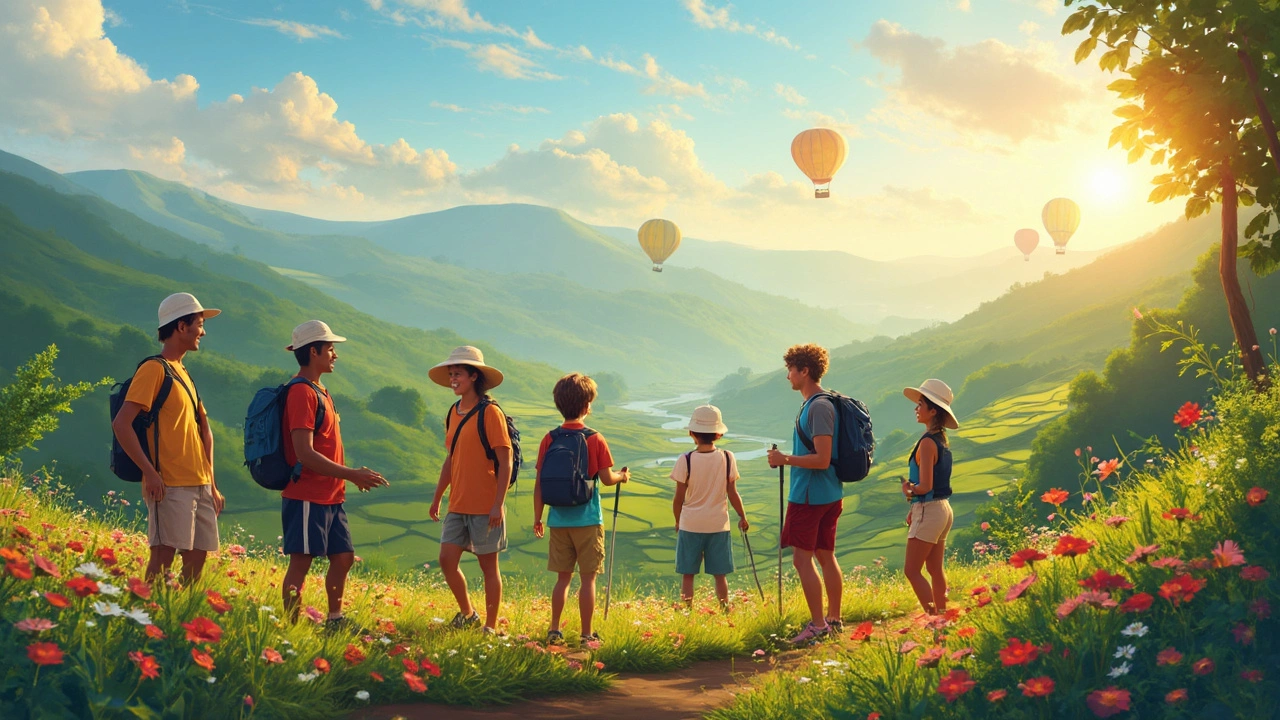Ever wanted to try adventure sports but felt nervous about hurting your knees or back? You’re not alone. Lots of us want the thrill without waking up the next day feeling like we got tackled by our own enthusiasm. The secret is picking the right kind of adventure that gives you excitement minus the bruises.
If your fitness level isn’t exactly pro or you just want something you can enjoy year after year, low-impact adventure sports can be a game-changer. Think less falling and scraping, more exploring and soaking in cool places—plus, way fewer visits to the doctor.
The trick is knowing what makes a sport “easy” on your body. It’s not just about being slow or boring; it’s about how your joints, muscles, and bones react to repeated movements. Choosing wisely can mean you have more adventures and fewer injuries—who doesn’t want that?
- What Makes a Sport Easy on the Body?
- Top Low-Impact Adventure Sports in India
- Equipment and Safety: How to Stay Protected
- Tips for Getting Started Without Injuries
- Choosing the Right Sport for Your Lifestyle
What Makes a Sport Easy on the Body?
If you’re worried about aching joints or tired muscles, understanding what makes a sport gentle on your body really matters. It isn’t just about how intense the sport looks on TV. It’s more about what actually happens to your bones, muscles, and ligaments during and after the activity.
The easiest adventure sport on your body usually ticks a few clear boxes:
- Low Impact on Joints: Activities with less pounding or hard landings are gentler—think cycling or kayaking versus running or basketball.
- Sustained, Smooth Movement: Sports that use steady, flowing motions help avoid sharp strains and muscle tears. For example, swimming and stand-up paddleboarding (SUP) are all about rhythm, not sudden stops or jerks.
- Customizable Intensity: Being able to slow down, take breaks, or control your effort makes a huge difference. Sports like trekking or easy hikes let you set your own pace, making them great for every fitness level.
- Support for Body Weight: If the sport helps support your weight (like water sports do), there’s less stress on knees and ankles compared to something like jumping or sprinting.
Want some real data? Check out this quick rundown comparing how much stress various adventure sports place on your body:
| Sport | Average Calories Burned / Hour* | Joint Impact (1=lowest, 5=highest) |
|---|---|---|
| Cycling (moderate) | 400-600 | 1 |
| Kayaking | 300-500 | 1 |
| Hiking (terrain varies) | 400-700 | 2 |
| Paragliding | 200-350 | 1 |
| White Water Rafting | 350-550 | 2 |
| Rock Climbing | 600-800 | 4 |
*Calories burned depends on weight and pace; joint impact score based on stress to knees, hips, and ankles (lower is softer on the body).
So, the bottom line is: if you want adventure that’s fun and gentle, look for sports where you move smooth, can control your tempo, and get extra support from gear or nature itself. That way, your body enjoys the ride right along with you.
Top Low-Impact Adventure Sports in India
If you’re trying to pick the easiest adventure sport for your body, you’ve got some surprisingly fun options right in India. Here’s a quick breakdown of activities that offer adventure but won’t leave you aching for weeks.
- Hot Air Ballooning (Jaipur, Lonavala, Goa): Floating above cities, lakes, and forts gives you incredible views without needing to run, jump, or even break a sweat. All you do is stand in the basket and enjoy. Great for all ages, and even people with knee replacements can do this.
- Paragliding (Bir Billing, Kamshet): If you’ve ever wanted to fly, paragliding is shockingly gentle. You jog a few steps for takeoff and the rest is quietly cruising and steering through the air. It’s easier on your joints than hiking uphill, and you get a wild rush from the views over the Himalayas or above Maharashtra’s lakes.
- Scuba Diving (Andaman Islands, Goa): Being underwater means zero impact on your joints. The gear looks heavy, but the water holds you up—so once you’re in, it feels effortless. Underwater life in Havelock or Netrani is nothing short of amazing, whether you’re a beginner or getting certified.
- Kayaking (Rishikesh, Kerala Backwaters): Paddling a kayak is mostly upper body work, but if you stick to calm rivers or lakes, it’s easy on the shoulders and totally safe for people with knee or ankle trouble. Some spots even have beginner classes where you’ll only use gentle strokes to move.
- Soft Trekking (Western Ghats, Coorg, Munnar): If you want to stay on the ground, many Indian hills offer trails marked as "easy." These soft treks avoid steep climbs and rough terrain, so you’re not punishing your ankles or back. Guided walking tours in tea estates or forest paths are perfect for folks who love fresh air but hate sprains.
Here’s a tip—always check with the local operators about the actual intensity. Even the most gentle adventure can feel tough if the organizers push people too hard or the weather’s wild. Stick to official, experienced companies and you’ll keep your adventure safe and truly low-impact.

Equipment and Safety: How to Stay Protected
If you think gentle adventure sports mean you can skip safety gear, that’s a one-way ticket to sprains and surprises. The lighter the sport, the lighter the load on your body, true—but small accidents can still happen. Especially when you’re out on rocky trails or unfamiliar rivers in India, the right equipment makes all the difference.
First, always check that what you’re using actually fits. Too loose or too tight, and you’re at risk for ankle twists or even worse. If you’re trying activities like kayaking or biking, helmets and life jackets aren’t optional—they’re just common sense. Here’s a quick look at basic equipment for popular low-impact adventure activities you’ll find in India:
| Activity | Essential Equipment | Extra Tips |
|---|---|---|
| Cycling (trail/road) | Helmet, gloves, padded shorts | Double-check tire pressure, make sure brakes work |
| Kayaking | Certified life jacket, sunblock, water shoes | Pick rivers with local guides if you’re new |
| Hot Air Ballooning | Cap, non-flammable clothing, sunglasses | Stick to operators with a safety certification |
| Hiking/easy trekking | Good grip shoes, hiking poles, water bottle | Walk with a buddy, pack a basic first aid kit |
Don’t forget simple stuff like chapstick, bug spray, or a power bank—smaller things that make your day less annoying. And, just for the record, nearly 70% of minor outdoor injuries in India happen because people skip basic gear. That’s a lot of aching knees and stubbed toes that could’ve been avoided.
If you want a quick checklist for easiest adventure sport days, try this:
- Always try your gear before the real outing—practice in your garden or backyard.
- Use weather check apps; sudden storms or heat waves are common in India, especially from April to June.
- If your activity involves water, double knot those shoes—nobody likes losing a sneaker to the current.
- Share your location with a friend or family member before heading out.
One last thing: Don’t ignore your gut. If the equipment looks sketchy or a tour operator seems sloppy, walk away. You want memories, not mishaps.
Tips for Getting Started Without Injuries
You don’t need to be a pro athlete to jump into easiest adventure sport options, but skipping the basics can lead to painful surprises. Here are some straightforward ways to ease in and keep your body happy from the start.
- Start slow and steady: Even if you’re excited, let your body warm up. If you’re trying kayaking or soft trekking, start with short sessions. Your muscles need time to adjust, especially to new movements.
- Learn from a certified instructor: Don’t wing it by watching random YouTube clips. For stuff like zip-lining or paddleboarding, a quick session with a certified local instructor in India makes a big difference. Good form means less strain and fewer mishaps.
- Don’t skip warm-ups (or cool-downs): A five-minute stretch before and after any activity loosens tight spots. This lowers your injury risk and helps you bounce back faster the next day.
- Gear up properly: Use the right shoes, safety harnesses, and helmets, even for low-impact sports. Comfortable clothing also stops chafing and weird muscle pulls.
- Stay hydrated and protect your skin: India’s weather can get hot and sunny. Drink plenty of water and slap on sunscreen—even if you’re out on water or in the hills.
One more thing: Check your ego at the door. If a spotter or instructor says a path or course isn’t for beginners, trust their judgment. The best adventure stories rarely involve a trip to the emergency room.

Choosing the Right Sport for Your Lifestyle
Picking the easiest adventure sport on your body isn’t just about what looks fun on Instagram—it's about what fits your life, schedule, health, and even your travel style. If you work long hours, have young kids, or haven’t exercised in ages, your choice might be different from someone training for a marathon.
- Ask yourself: Do you want to be outside or inside? Some sports like kayaking and stand-up paddleboarding (SUP) are tied to lakes and rivers, while indoor climbing gyms mean you don’t need to check the weather.
- How much time do you have? Trekking can take a full day or sometimes a weekend, yet cycling or gentle yoga on a SUP can fit into a two-hour window and still give you a rush.
- Think about your current fitness. Biking on smooth trails is easier on joints than running, and cycling is one of the easiest adventure sport choices for people with knee issues. A study by the Indian Council of Medical Research found cycling caused fewer injuries than jogging among adults over 40.
- Consider the costs. While sport climbing in gyms might cost more upfront, you won’t need to invest in expensive gear for every session. Paragliding takes more training and money but it’s a once-in-a-lifetime thrill some people swear by.
- Check for local clubs or communities so you don’t end up trying something alone. Social support makes you more likely to stick with it and have fun along the way.
| Sport | Avg Calories Burned | Joint Impact |
|---|---|---|
| Cycling (flat beginner trails) | 280–400 | Low |
| Kayaking | 220–350 | Low |
| Paragliding | 180–240 | Very Low |
| Gentle hiking (easy terrain) | 250–350 | Low |
Don’t feel pressured to pick what’s trendy or what your friends love. Your best sport is the one you’ll enjoy enough to do again next week without dreading it. Start with a trial session or a beginner’s workshop. If you’re not having fun, you can always switch. Trust me—Jasper, my cat, isn’t the only one who believes in nine lives for trying new things. You’ve got options.
